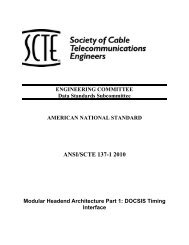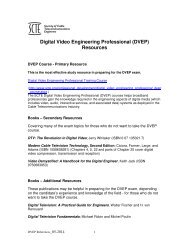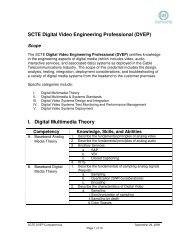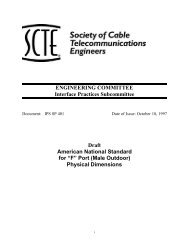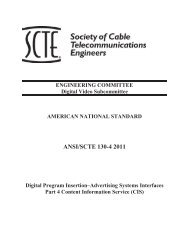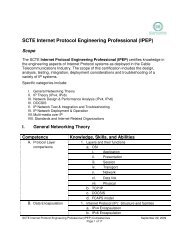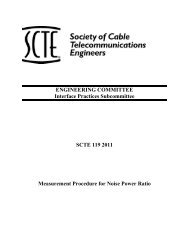Create successful ePaper yourself
Turn your PDF publications into a flip-book with our unique Google optimized e-Paper software.
Table 7-9 Alive_Request_Data<br />
Syntax Bytes Type<br />
Alive_Request_Data{<br />
time( )<br />
}<br />
time( ) –The current UTC time clock of the sending device checked as close as possible to<br />
the sending of the message. This is designed to be used by the Splicer and the Server to<br />
check on how well the two systems are time synchronized. It is not expected that this will<br />
allow the systems to synchronize well enough to allow reliable splicing to occur, but the<br />
implementers may use this as they wish. See Section 8.4 for the time( ) structure syntax.<br />
7.6.2. Alive_Response Message<br />
The data( ) field for the Alive_Response message contains the Alive_Response_Data<br />
structure outlined below.<br />
Table 7-10 Alive_Response_Data<br />
Syntax Bytes Type<br />
Alive_Response_Data{<br />
State 4 uimsbf<br />
SessionID 4 uimsbf<br />
time( )<br />
}<br />
State – This describes the state of the Output Channel.<br />
Table 7-11 Alive_Response Message States<br />
State<br />
0x00<br />
0x01<br />
0x02<br />
Description<br />
No output<br />
On Primary Channel<br />
On Insertion Channel<br />
21



